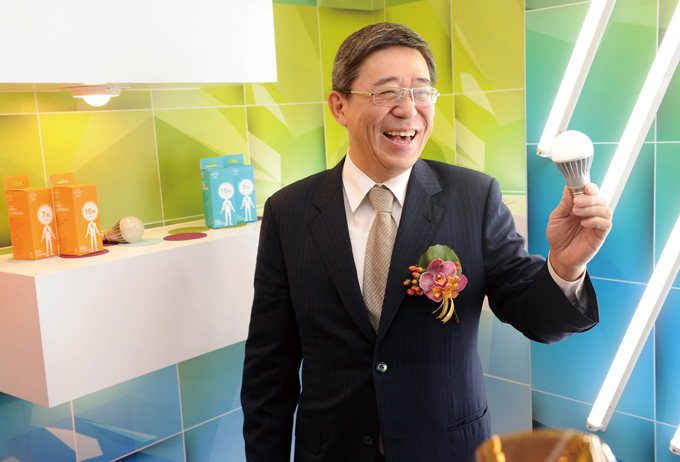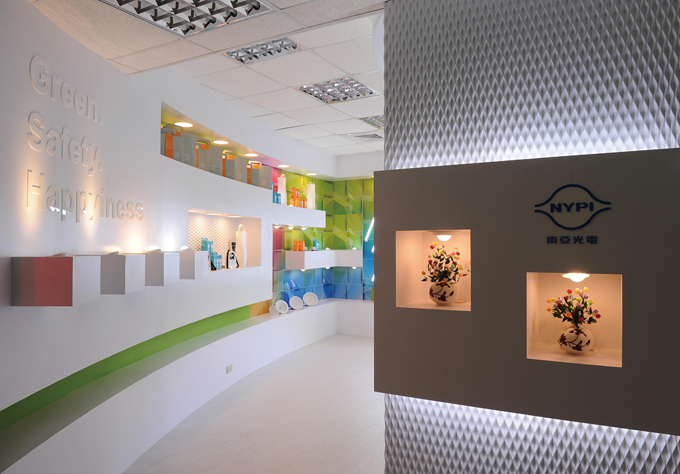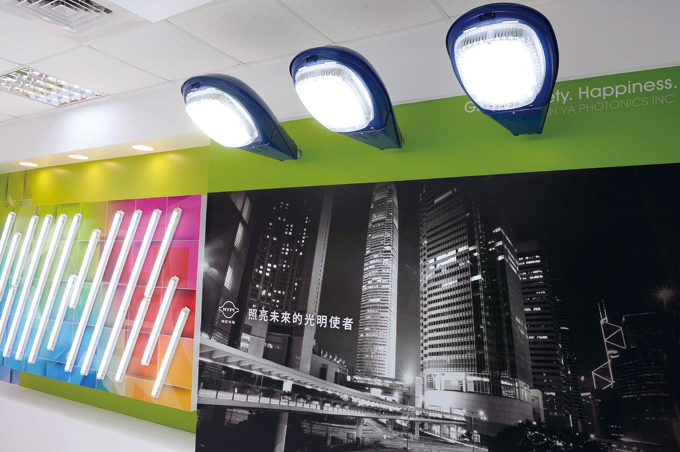Nanya Photonics to Set up Automated LED Bulb Line
Industry executives regard US$10 as price tipping point for LED bulbs
2012/10/12 | By Ken LiuNanya Photonics Inc. launched a fully automated assembly line for light bulbs in June this year, perhaps the decisive step in its resource-integration plan to cut production costs.
“We expect the 7W bulbs to be made on the fully-automated line to replace 40W incandescent bulbs and to go to market below US$10 apiece by the end of this year,” says Bir-Jen Wu, company president, who adds that currently available 7W LED replacements for 40W incandescent bulbs are priced NT$200-NT$700 (US$6.8- US$24) apiece, depending on quality.

Nanya executives say that despite high efficiency of LED bulbs, their penetration in Taiwan remains below 10% due mainly to relatively higher prices. They say that LED bulbs consume around 200 watts yearly with 10 hours of daily use, costing each family around NT$2,190 (US$75), which is far more efficient compared to incandescent bulbs whose power consumption is around 1,200 watts yearly to cost NT$13,140 (US$453) a year with the same usage; while compact fluorescent lamps, currently still widely used to save energy, consume around 400 watts yearly to cost NT$4,380 (US$151).
Industry executives regard US$10 as the price tipping point for LED bulbs, reaching of which should motivate consumers to choose such lighting option.
Joint Effort
Nanya has built the automated line in cooperation with several FPG subsidiaries, Taiwan’s Industrial Technology Research Institute (ITRI), and Epistar Inc.
Chairman of chipmaker Epistar, B.J. Lee, says that the new, unique automated line will replace the current manual assembly of LED lighting, which may not initially reduce LED bulb prices but is a step in the right direction.

In 2010, Epistar took a 40.75% stake in Nanya from the Formosa Plastics Group (FPG) to help Nanya diversify into lighting from chip-making by offering its high power chips. “LCD TV backlights remain the primary application for LED that is used in over 70% of backlights. Despite its ubiquity in the TV backlight sector, LEDs are used in less than 1% of light fittings worldwide, reflecting its huge, untapped potential for FPG,” says W.C. Wang, Nanya’s chairman.
In return, Nanya pledges to support Epistar’s epitaxy wafer production capacity with its MOCVD (metal organic chemical vapor deposition) chambers, which are being planned to increase to 17 systems over next few years from the current five.
A maker of epi wafers, Nanya mostly carry chips for backlight modules instead of light fittings. Epistar, world’s No.1 blue LED chipmaker in terms of epi-wafer production capacity, has introduced many feature-laden, high-power LED chips for lighting applications; while Nanya has introduced T8 light tubes, streetlights, low bay lights, MR16 spotlights, portable lights, horticultural bulbs in addition to conventional light bulbs.
Since its establishment in 2003, Nanya, like all FPG subsidiaries, carries on operating driven by the philosophy that is locally-known to have built one of the longest-established conglomerates in Taiwan: building competitiveness on efficient management. Its website lists five competitive advantages but places atop “the ability to cut cost.”
Nanya’s automated line, with designed monthly capacity of 400,000-500,000 bulbs in volume production that is scheduled to start in the fourth quarter of this year, can cut production cost by 20% from that achieved with current production, not to mention the four to five times rise in output.
These LED bulbs will also, according to Wu, be 20% lighter and 20% brighter than competing products, making these bulbs affordable, high-end, energy-saving.
The company began installing the lines in June this year, pilot production in the third quarter to possibly achieve the goal of volume production by the end of this year. The second and third lines may also be set up, says Wu.
Bulbs will be made by assembling light fittings with light engines or modules to simplify the process for automated production, with LED chip packaging to be outsourced.
According to Epistar’s Lee, the high start-up cost of automation works against immediate cost reduction but should help the industry to achieve lower cost eventually. “W.C. Wang is determined to automate production before selling products,” Lee says.
As bulbs are end-user products, Nanya will have no option but to engage in business-to-customer operation for the first time. In retail markets, the company is promoting the “ECO MAN” brand; while FPG’s reputation and global outlets make for the most value asset to build such brand overseas, namely in the Americas, Europe and Japan,” stresses Wu.
The company says it may also contract manufacture bulbs for international names to maximize revenue, and is reportedly having bulbs verified at suppliers.
Uphill Battle
As South Korean LED-lighting manufacturers like Samsung aggressively cut cost to enhance global competitiveness, Nanya expects an uphill battle, a scenario that does not seem to compromise Wang’s confidence.

Some industry executives compare the LED sector competition between Taiwan and South Korea with the counterpart in the DRAM field, in which South Korea’s formidable production capacity, technological lead have left Taiwan’s DRAM makers bleeding. Wang believes investing in LED production automation is less risky than in DRAM production for LED lighting is essential, replaced regularly, less affected by boom cycle, use lower-end technologies and have relatively longer lifespan.
FPG’s money-losing DRAM affiliates Nanya Technology Corp. and Inotera Memory Inc. will probably serve as useful asset for Nanya Photonics, which plans to help the two DRAM manufacturers turn profitable by using part of their 200mm wafer fab capacity to make high power LED chips for lighting products.
Epistar says that, while Nanya depends on Epistar for lighting chips, it will eventually use in-house chips in the long run as its own technology improves.
Nanya also plans to further tap the LED street-lighting segment, targeting the markets in Taiwan and China once it acquires Taiwan’s CNS15233 quality certificate in the second-half of 2012. Such ambition is not unfounded for it has installed hundreds of LED streetlights at FPG’s factory complex in Mailiao, Yunlin County, central Taiwan for field tests.

